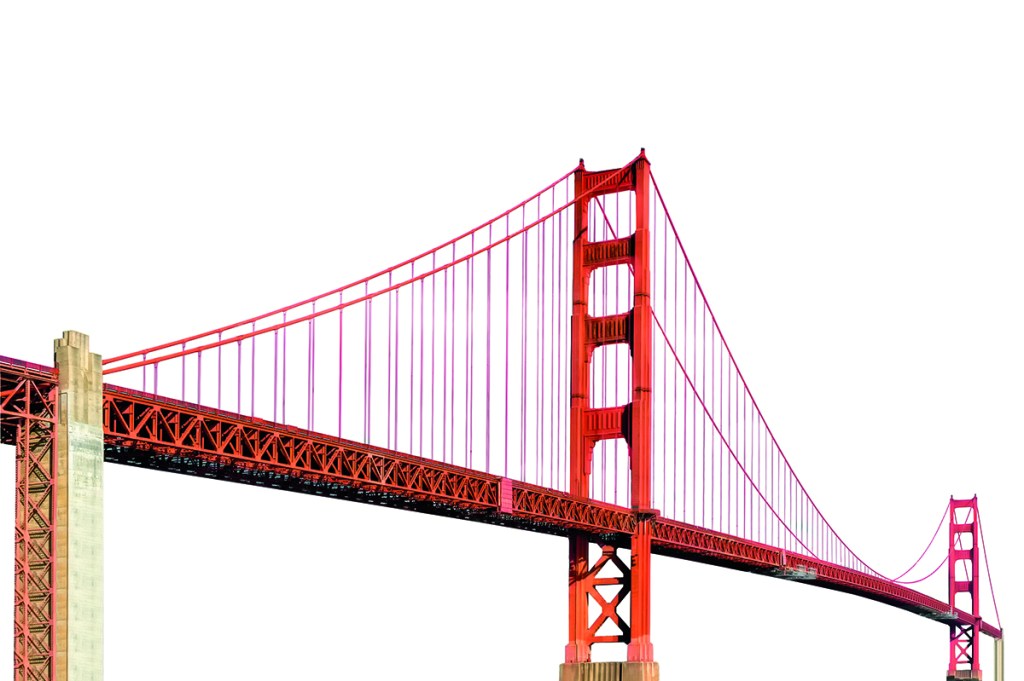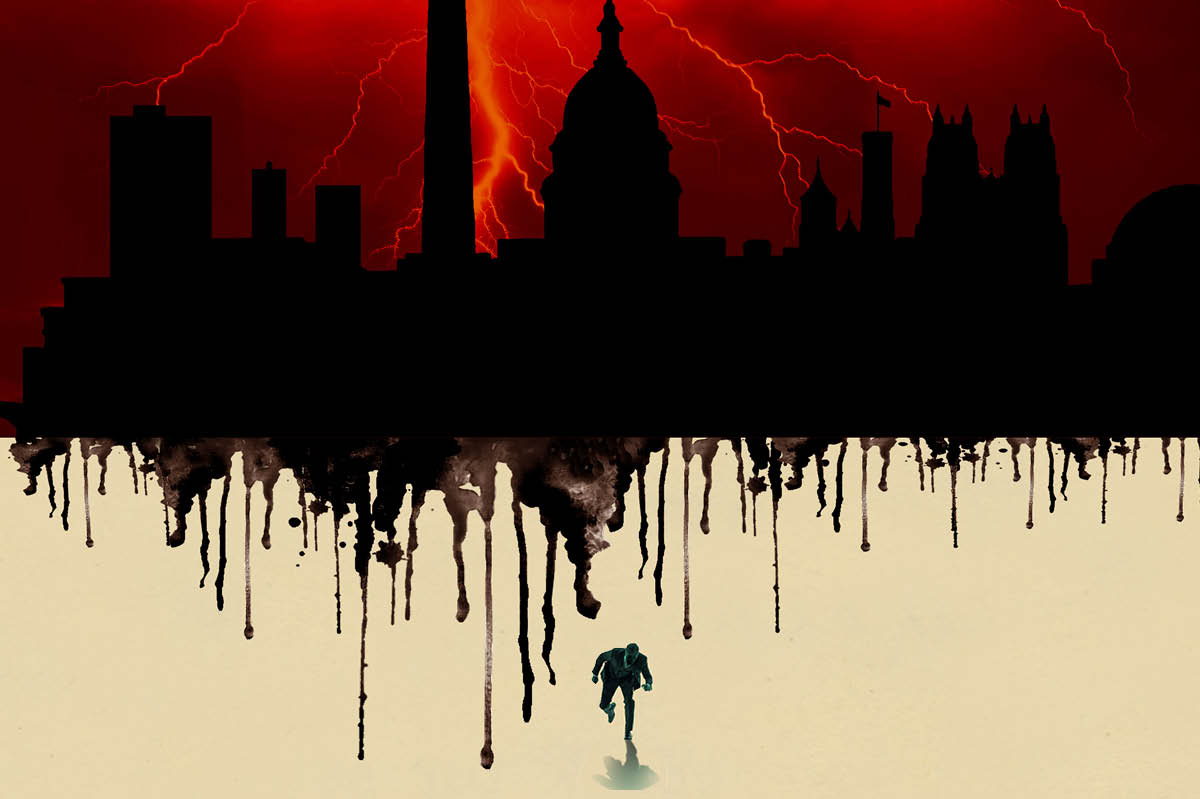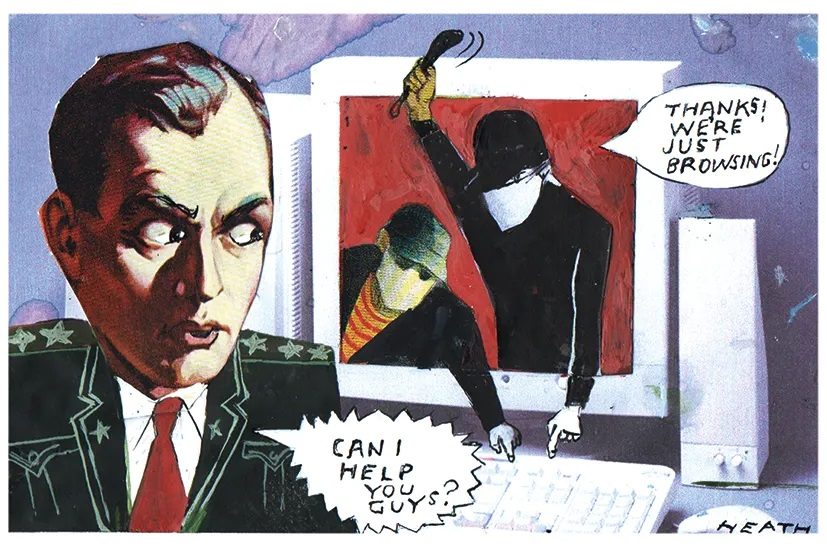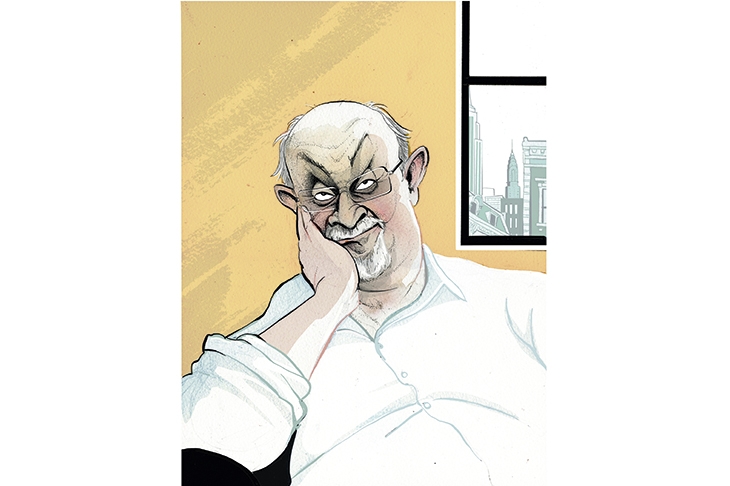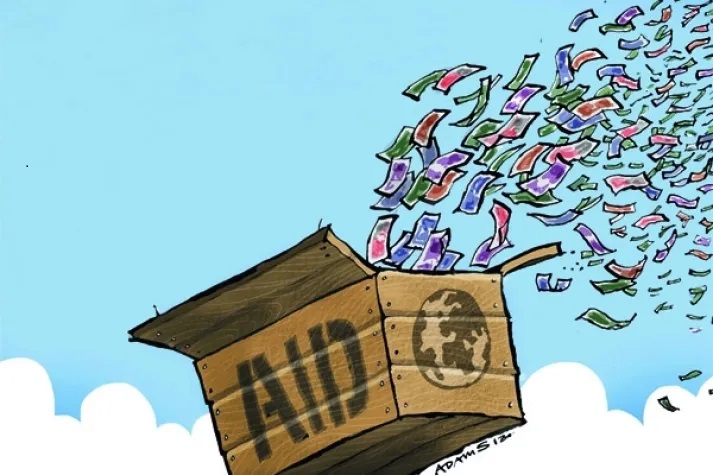As recently as the early Nineties, when the great cities of the Midwest and East Coast were careening toward what seemed like an inevitable downturn, the urban agglomerations along the Pacific coast offered a demonstrably brighter urban future. From San Diego to the Puget Sound, urban centers along America’s western edge continued to thrive and expand as migrants from other parts of the country, and the world, crowded in.
In the process, the Pacific cities seized the economic initiative. The West Coast became home to the country’s premier trade entrepôt and its dominant entertainment and technology centers, and home to five of the world’s six most valuable companies.
Yet now these same cities — despite differing histories and industrial mixes — face a precipitous decline. Never before have all the burgeoning cities of the future, Los Angeles, San Francisco and Oakland, started to shrink. This is, at least in part, a reaction to high prices, relentless property crime, homelessness — San Francisco’s rate of homelessness, for example, is twelve times the national average — and diminished economic opportunity, particularly for the middle and working classes.
At the same time, big companies like Tesla, Oracle, Hewlett-Packard, Jacobs Engineering, Fluor, Bechtel and McKesson have moved headquarters; others are shifting their operations elsewhere, largely to more business-friendly and less costly regions in Texas, Arizona, Nevada, Florida and Tennessee. Hundreds of other less notable companies, most paying above average wages, have also gone east and south.
The largest US economies are increasingly located in the sunbelt states, which are fast becoming the prime locations for Fortune 500 companies, with Houston and Atlanta in the top three after New York. But Southern states, including Georgia, Louisiana, Florida and Texas, also dominate the list of most small businesses per capita. This is not simply a shift of low-wage jobs; according to the forecaster Lightcast, it includes manufacturing as well as business and professional services, the largest high-wage sector.
America’s urban woes aren’t limited to the West Coast, of course. But the decline there has generally been steeper than elsewhere. Why? How did such golden cities get so tarnished, so quickly? Unlike in the tragic case of the Midwest, the answer is not reliance on declining industries: tech, space, entertainment continue to show promise and could propel growth for decades. Instead, the damage has been remarkably self-inflicted, reflecting the reckless growth of a set of progressive dogmas, tough on police and permissive toward criminals and vagrants while imposing ever more burdens on what is left of the middle class.
The results of these policies are particularly evident in tech-rich San Francisco, where decades of tolerance for even extreme deviant behavior has helped create a city with more drug addicts than high school students; little wonder it ranked last in the US for efficiency in a recent WalletHub survey. In Southern California’s far more proletarian city of Los Angeles, a UN official last year compared conditions on downtown’s Skid Row to those in Syrian refugee camps. Like Los Angeles and San Francisco, Oakland, Portland and Seattle show some of the highest per capita rates of homelessness in the country.
San Francisco may grab the headlines, but perhaps nowhere is the political change more notable than in Los Angeles, a city I moved to in 1975 and my home until seven years ago. Back then LA, in contrast to places like New York, was what the late Fred Siegel described as “the capitalist dynamo,” brimming with new companies not just in entertainment or aerospace, but in fashion, where it was the production leader, as well as in trade and scores of smaller niche businesses, many of them run by on-rushing immigrants and escapees from east of the Sierra.
This ebullient economy existed not only under conservatives like Sam Yorty but under Tom Bradley, his African-American successor and a former cop. Like previous mayors, Bradley, particularly in his first two terms, embraced traditional growth strategies, expanding the city’s port, investing in roads and bridges, bolstering its large industrial base. LA saw itself as the city of the future — and with good reason.
Such assertions seem absurd today. Los Angeles not only lags in job growth, it is losing its grip on the industries which drove its ascent. Industrial employment, a traditional source of blue-collar upward mobility, dropped from a million in 1990 to barely 300,000 now. LA County, which includes the city and its environs, has lost virtually all its largest companies including Northrop Grumman, Unocal, Occidental Petroleum, Hilton Hotels, Computer Sciences and Sun America.
The “capitalist dynamo” is still evident on the streets, particularly in Asian and Latino neighborhoods. But the jobs created there are primarily smaller scale, poorly paid and service-oriented, admits LA booster Michael Kelly, executive director of the Los Angeles Coalition for the Economy and Jobs. Industrial decline has been particularly devastating to the African American and Latino communities, where these firms were a source of gainful, steady employment. After the riots of 1992 order and some degree of racial harmony were restored under Bradley’s successor, the late Richard Riordan, a pro-police businessman who restored the flagging confidence of the business community. But after Riordan, the city’s politics changed, as progressives began to take over all the organs of governance, cheered on by Hollywood and the increasingly leftist LA Times. This year, rising crime prompted rapper 50 Cent to warn that “LA is finished” after the city lifted bail requirements for people arrested for nonviolent, non-serious felonies and misdemeanors.
Behind many wrong turns in LA’s recent history lies the apparent desire of city leaders to transform, even overturn, its basic character, always defined by scores of smaller, largely lower-density communities, what one early booster called “the better city.” Instead, starting in the 1980s, city leaders began to fantasize about aping New York. Los Angeles County spent billions on building an urban rail system, promoted denser development and dreamed about turning its lackluster downtown into a gleaming corporate, arts and entertainment center.
Even now, LA seems stuck in its density delusion. Even though it ranks near the bottom nationally in new housing construction, the city wants to authorize massive building programs for hundreds of thousands of units in two of its least attractive areas, Hollywood and downtown. Both parts of the city are plagued by large homeless populations, while fleeing businesses have emptied increasingly unused office towers. Even before the pandemic the $20 billion-plus transit system, more and more burdened by crime and homelessness, carried fewer riders than the old bus-only system did in 1985. The system’s salvation, such as it is, is that massive numbers of poor people are unable to afford cars and must rely on public transport.
Demographic trends tell a shocking tale, particularly for a city that attracted huge waves of aspiring middle- and working-class families for nearly a century. Over the last two decades, Los Angeles County, by far America’s largest urban county, has lost 750,000 residents aged under twenty-five. In the last decade even the foreign-born have been leaving: the county lost foreign-born population between 2010 and 2020, as immigrants and their families headed instead to booming cities in Texas and Florida. According to the state, Los Angeles now has fewer residents than in 2010 and is expected to shrink by an additional 1.7 million by 2060, according to the most recent state Department of Finance estimates.
Even when Los Angeles emerged in the 1920s as the West Coast’s premier city, San Francisco remained confident, even arrogantly so, about its superiority. The late California newspaperman Neil Morgan once dubbed it “the narcissus of the West.” San Francisco, its boosters argued, was a “real city” in a way that auto-dominated, sprawling Los Angeles was not. It saw itself, with reason, as the Pacific equivalent of Manhattan, a big-time city with better weather, a more spectacular location and a legacy economy defined by big banks, insurance companies and engineering firms.
But the real game-changer took place not in San Francisco but in the once bucolic regions to its south. Silicon Valley’s filled-out pattern resembled LA sprawl, a vast suburban network filled with defense and space firms. It was, and remains, the epicenter of the global tech industry, home to more of the ultra-rich than any region on earth. As the tech industry has migrated from production to software and social media, more of this business headed back to the city, while employees of Valley companies increasingly commuted from trendy urban locations.
Yet even as the city and region expanded with the tech boom, the lack of good working-class jobs and soaring property prices undermined social stability. Homelessness has become an overwhelming issue. Former mayor Gavin Newsom’s 2004 pledge to end homelessness in a decade turned out to be one of his more egregious empty promises.
In fact, Newsom and his successors adopted standard left-wing positions, particularly on vagrancy, drug use and “petty” theft, that have come close to destroying a city arguably better positioned for success than any other in the country. San Francisco suffers among the worst levels of property crime in the country and residents frequently find themselves dealing with theft, public defecation, open public drug use and occasional assaults.
This sad scene is unfolding even as tech’s golden goose is also flying south. The ease with which tech work can be done remotely is definitely hurting — nearly half of Silicon Valley’s jobs, notes a University of Chicago study, can be done from home.
Meanwhile, dirt, homelessness and hypodermic needles (roughly two million are left on streets annually), are depressing the tourism and hospitality industry, the city’s other big employer.
This once unstoppable economy retains some of its crown jewels, but the region overall is losing its allure. Even Silicon Valley itself, with a 17 percent vacancy rate, is singing the blues as construction projects, like Google’s in downtown San Jose, have failed to materialize. Once proud promoters of urban density, a group of oligarchs may see the tech future not in San Francisco or even San Jose, but in a proposed project in exurban Solano County sixty miles from the city. It’s a good idea, but it will face strong opposition from NIMBYs and the state’s powerful green lobby. This suburban shift may be the best way to rescue the Bay Area from eventual obsolescence. But it could also accelerate the movement away from places like San Francisco and San Jose.
Today, San Francisco and the Bay Area in general are less a beacon of progressive success than a devastating example of its excesses. The city’s once strong condo market is facing enormous challenges and many hotels, supermarkets and other retailers, including some with deep local roots, have announced plans to leave. The once-great magnet is losing its draw, showing that even great assets can, if poorly served, be squandered.
Even as California’s cities began their descent, Seattle and Portland seemed to be thriving. After disastrous layoffs in the early Seventies from its leading employer, Boeing, Seattle regrouped with a new group of growth companies led by Microsoft, Costco and Amazon. For much of the last decade, these cities have attracted migrants from California, lured by somewhat lower housing prices and, until recently, less severe social problems.
Now the region is being pummeled by tens of thousands of layoffs. Seattle’s finances are increasingly precarious and its left-leaning council’s response has been to raise taxes on businesses while exempting public employees. At the same time it has become a major center of homelessness and civic disorder. During the George Floyd riots, a whole section near the city’s downtown became essentially self-governing, under the control of hardcore radicals, with lethal effects. More and more city residents feel crime, rising rapidly in recent years, is bad enough to drive them out.
Migration patterns have changed as well. During the first two decades of the twenty-first century, Seattle participated in the region’s boom, which saw the addition of 187,000 domestic migrants. But now the Seattle metropolitan area is losing net migrants while many residents are moving to the state’s smaller metropolitan areas such as Bremerton, Spokane and Olympia.
Portland never achieved Seattle’s economic dynamism but was widely hailed as a model for dense, progressive planning and social liberalism — it positioned itself as a leisure-oriented San Francisco where “young people go to retire.” Despite being the whitest of America’s big cities, it was wracked with almost constant violent protests for much of 2020, extending even to the gentrified Pearl District. Spurred by crime and disorder, the Portland area is now losing domestic migrants. The region added 252,000 net domestic migrants between 2000 and 2020, but since then the Census Bureau has found that Portland’s urban core county, Multnomah, lost 13,000 net domestic migrants while the surrounding suburbs grew modestly.
Some still praise Portland as “an anarchic wonderland.” But now its streets are best known not for quirky food trucks and street musicians but growing fentanyl use. Over the past three years, the LA Times reports, the number of unhoused people in the Portland metro area has jumped from about 4,000 to at least 6,600. Shootings in the city have tripled. Homicides climbed from thirty-six in 2019 to ninety-seven last year. Lower-level crimes have spiked too: more than 11,000 vehicles were stolen in 2022, up from 6,500 in 2019. According to Portland’s KGW-TV, “every forty-two minutes there is a report of vandalism,” often involving broken windows. There were more reports of broken windows last year than during the 2020 riot year.
It is certainly too early to write off the once mighty Pacific cities. They retain many critical natural assets: they’re near mountains and spectacular water views; they have relatively mild climates (likely a big plus in a period of global warming), and a concentration of promising industries. The education base from the University of Washington, Berkeley, UCLA, Caltech and other top schools still gives the region a headstart in many promising industries.
In each of these Western cities, the key challenge is political. No one should expect a GOP resurgence, but there has been some modest pushback to the progressive agenda. San Francisco, for example, removed some particularly radical school board members and replaced its ultra-lenient DA, as did Seattle. There are stirrings in minority communities, as evidenced by a growing shift of Asian and Latino voters to the right, and in Oakland, the local NAACP recently denounced lax policing as a cause of growing violence, particularly in the black community.
Certainly, public opinion is not satisfied with the status quo. A 2022 poll from the San Francisco Chronicle found that roughly a third of the respondents were likely to leave within the next three years. Two-thirds said that life in the city is worse than when they’d arrived, and only one-quarter of respondents expected life in San Francisco to improve in two years. More than one-third said it would worsen.
Nevertheless, last year, Los Angeles decisively elected Karen Bass, a product of the city’s Democratic machine, as mayor over a pragmatic businessman, Rick Caruso. As middle-class voters leave, radicals continue to win more seats on the city council. Oakland also recently elected an unreconstructed radical and defunding enthusiast, Sheng Thao, as mayor, even as developers begin to turn away from the troubled city amid soaring crime and a depleted police force that only responds to violent lawbreaking. A stolen car, or a looted store, simply has no priority.
For these reasons, MSNBC’s recent claim that “the progressive takeover of America’s big cities is nearly complete” has a terrifying ring of truth. Hardcore radicals are now ascending not only in Los Angeles but San Francisco, Portland and Seattle. Some pledge to create “socialism in one city,” by passing such things as the Los Angeles proposal to establish a $30 hourly minimum wage for hospitality and airport workers. Seattle, facing a fiscal squeeze, now wants to impose its own city-wide capital gains tax.
As Seattle Council member Kshama Sawant said in a widely shared video, she and her supporters are “coming to dismantle the deeply racist, sexist, violent, utterly bankrupt system of capitalism” and replace it with “a socialist world.” Sawant also promised to “take into public ownership the top 500 corporations and banks that dominate the US economy.”
The west coast’s competitive edge is being further eroded by mounting pressure from urban planners and radical environmentalists. In Portland there are moves to ban gas-powered trucks from the emptying downtown. The LA Department of Water and Power’s plans to go “net zero” promise in reality to triple energy bills by 2035; not exactly a boon to low-income residents or industries. Many who are concerned about climate change demand the end of suburban expansion, despite evidence from a recent Breakthrough Institute report that suggests suburbs are potentially more “green” than dense cities.
And as the foregoing implies, all these cities face severe fiscal challenges. A December report from the San Francisco Standard reported the city’s budget projections for the next six years included over $1 billion in lost commercial property tax revenue. As noted by city economist Ted Egan, office space industries contribute about 72 percent of San Francisco’s GDP, meaning that “if anything happens to the office sector, it ripples throughout virtually every aspect of the city’s economy.”
At some point fiscal reality and progressive fantasy are bound to collide. It’s hard to see where the money will come from, for example, for San Francisco’s reparations program, which proposes to pay $5 million to all qualified black residents. Plans to build more public housing, pushed in all these cities, face similar obstacles.
Given their remarkable assets, physical and intellectual, the Pacific cities should be thriving, not losing people and jobs to far less attractive hotspots like Dallas, Houston, Phoenix or Nashville. Yet until the progressive stranglehold is somehow loosened, this decline will continue, to the immense sorrow of those of us who headed West in search of a better urban experience.
This article was originally published in The Spectator’s October 2023 World edition.



